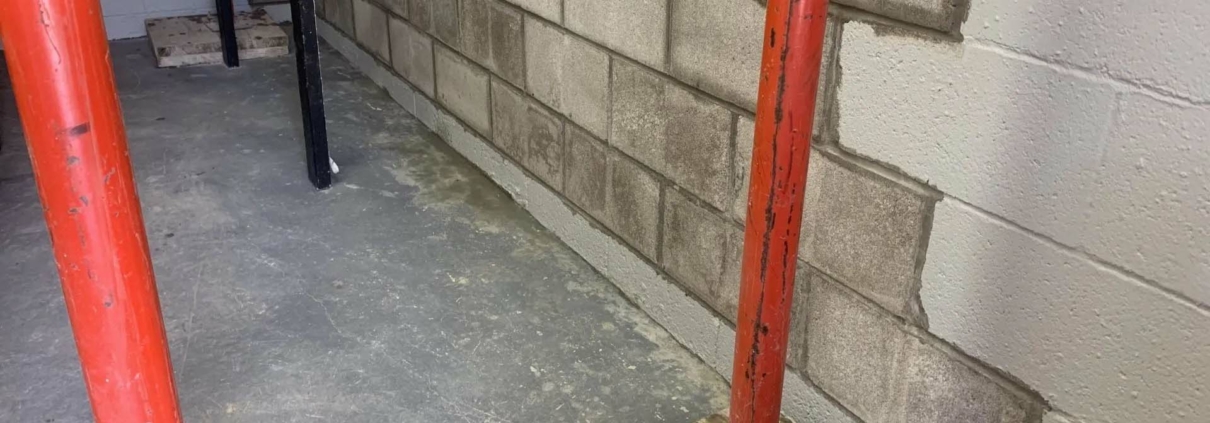Choosing the Right Interior Waterproofing Solution for Your Home
When it comes to protecting your home, few things are as crucial as keeping water out. A damp or leaky basement isn’t just an inconvenience; it can lead to serious structural damage, mold growth, and a host of other problems. The key to safeguarding your home from these issues lies in choosing the right interior waterproofing solution. With so many options available, how do you determine which one is best for your home? This guide will help you navigate the process, ensuring that your basement stays dry and your home remains secure.
Understanding the Causes of Basement Moisture
Before diving into specific waterproofing solutions, it’s important to understand where the moisture in your basement is coming from. Water can enter your basement through several channels:
- Hydrostatic Pressure: This occurs when groundwater accumulates around the foundation, pushing water through cracks and porous concrete walls.
- Condensation: Humid air within your basement can cool on contact with the cooler basement walls, leading to condensation and moisture buildup.
- Surface Water: Poorly graded landscaping or clogged gutters can cause water to pool around the foundation, leading to leaks.
Understanding the source of the moisture is the first step in choosing the right waterproofing solution.
Exploring Interior Waterproofing Solutions
Interior waterproofing solutions are designed to manage and prevent water that has already made its way inside your home. Here are some of the most common options:
- Sealants and Waterproof Coatings:
- Best For: Minor cracks and surface moisture.
- How It Works: Sealants and coatings are applied to the interior walls and floors of your basement, creating a barrier that repels water. This is an effective solution for minor issues but may not be sufficient for more significant water problems.
- Interior Drainage Systems:
- Best For: Managing water that enters the basement through the walls or floor.
- How It Works: Interior drainage systems involve installing a drain tile system beneath the basement floor, which collects and channels water to a sump pump. The sump pump then removes the water from your basement, keeping it dry.
- Sump Pumps:
- Best For: Basements prone to flooding or with high water tables.
- How It Works: A sump pump is installed in a pit, known as a sump basin, in the lowest part of your basement. As water accumulates in the basin, the pump automatically activates to expel the water outside, away from your foundation.
- Vapor Barriers:
- Best For: Controlling humidity and preventing condensation.
- How It Works: Vapor barriers are installed on the interior walls and floors of the basement to prevent moisture from seeping through. They are particularly useful in crawl spaces and basements with high humidity levels.
- Dehumidifiers:
- Best For: Reducing overall humidity levels in the basement.
- How It Works: Dehumidifiers pull moisture from the air, lowering humidity levels and reducing the risk of mold growth. While not a standalone waterproofing solution, dehumidifiers are an excellent addition to any moisture control strategy.
Choosing the Right Solution for Your Home
Selecting the right interior waterproofing solution depends on several factors, including the source of the moisture, the severity of the problem, and your budget. Here are some tips to help you make the right choice:
- Assess the Severity: If you’re dealing with minor condensation, a dehumidifier or vapor barrier might suffice. However, for significant leaks or flooding, an interior drainage system with a sump pump is likely necessary.
- Consider Your Budget: Some solutions, like sealants and dehumidifiers, are relatively inexpensive, while others, such as sump pumps and full drainage systems, represent a more significant investment. It’s essential to balance cost with the need for long-term protection.
- Consult a Professional: While some DIY solutions are effective, consulting with a waterproofing professional can provide peace of mind. They can assess your basement, identify the source of the moisture, and recommend the most effective solution for your specific situation.
- Think Long-Term: Waterproofing your basement is an investment in your home’s future. Consider the long-term benefits of each solution, such as preventing mold growth, protecting your foundation, and increasing your home’s value.
Protecting Your Home with the Right Solution
Choosing the right interior waterproofing solution for your home is essential for maintaining its structural integrity and ensuring a healthy living environment. By understanding the sources of moisture and carefully evaluating your options, you can select a solution that not only keeps your basement dry but also provides long-lasting protection for your entire home.
Remember, a dry basement is more than just a convenience—it’s a key component of a safe, comfortable, and valuable home. Invest in the right waterproofing solution today to enjoy peace of mind for years to come.




